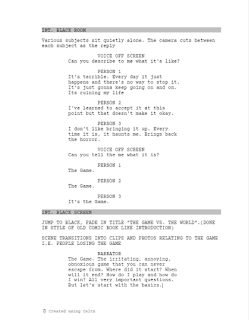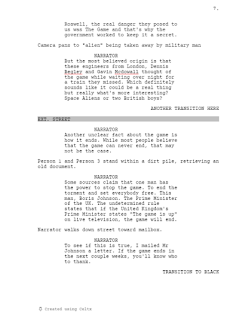After working over the past few weeks to complete the pre-production stage of my project, the following is what I have accomplished.
Releases Link
Releases
The following are the releases that I have collected for this project. Three of these releases are talent releases for the the three actors who will appear in the documentary. These actors are all people who I personally know and are reliable enough to depend on for this project. The other release is a location release. The selected location for this film was my house. With my script being relatively simple and not requiring a large amount of locations, my property should be flexible enough to make the film come to life. Below is a link to pictures of my releases as it is difficult to insert pictures into Blogger without encountering formatting errors.Releases Link
Storyboard
The storyboard that I have drawn for the documentary gives a basic view of what I would like the final product to look like. There were a few sections on the storyboard that I left vague. The reasoning behind this is because currently I know what I would like to insert in these sections however, I do not know what they should look like and likely won't know until I go and film.
Below is again a link to pictures of my storyboard.
Script
My script for the documentary can be seen below. I do not consider myself a writer, but I feel that this script best represents what I would like to accomplish. I worked to create moments of comedy while also teaching about the focused topic. While I will largely stick to what I have written, I feel that it is likely that I will change and adapt portions of the script to better fit with what I am able to produce. If it is difficult to view the script on Blogger, below is a link to pictures of each page of the script.








Comments
Post a Comment